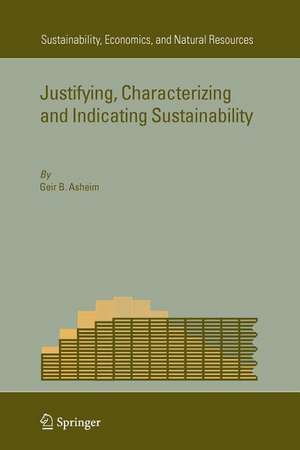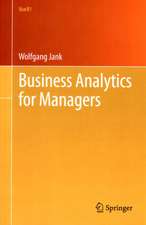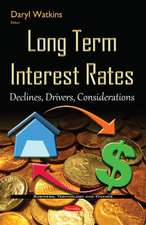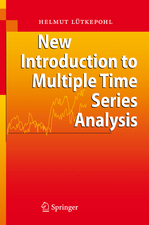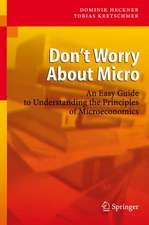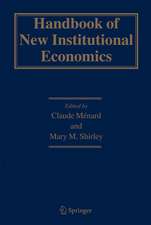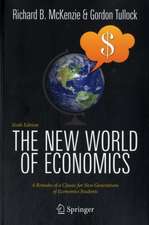Justifying, Characterizing and Indicating Sustainability: Sustainability, Economics, and Natural Resources, cartea 3
Autor Geir B. Asheimen Limba Engleză Paperback – 30 noi 2010
| Toate formatele și edițiile | Preț | Express |
|---|---|---|
| Paperback (1) | 1217.41 lei 6-8 săpt. | |
| SPRINGER NETHERLANDS – 30 noi 2010 | 1217.41 lei 6-8 săpt. | |
| Hardback (1) | 1223.43 lei 6-8 săpt. | |
| SPRINGER NETHERLANDS – 24 iul 2007 | 1223.43 lei 6-8 săpt. |
Preț: 1217.41 lei
Preț vechi: 1484.65 lei
-18% Nou
Puncte Express: 1826
Preț estimativ în valută:
232.98€ • 252.98$ • 195.70£
232.98€ • 252.98$ • 195.70£
Carte tipărită la comandă
Livrare economică 22 aprilie-06 mai
Preluare comenzi: 021 569.72.76
Specificații
ISBN-13: 9789048175635
ISBN-10: 9048175631
Pagini: 308
Ilustrații: XII, 294 p.
Dimensiuni: 155 x 235 x 16 mm
Greutate: 0.44 kg
Ediția:2007
Editura: SPRINGER NETHERLANDS
Colecția Springer
Seria Sustainability, Economics, and Natural Resources
Locul publicării:Dordrecht, Netherlands
ISBN-10: 9048175631
Pagini: 308
Ilustrații: XII, 294 p.
Dimensiuni: 155 x 235 x 16 mm
Greutate: 0.44 kg
Ediția:2007
Editura: SPRINGER NETHERLANDS
Colecția Springer
Seria Sustainability, Economics, and Natural Resources
Locul publicării:Dordrecht, Netherlands
Public țintă
ResearchCuprins
Justifying Sustainability.- Economic Analysis of Sustainability.- Intergenerational Ethics Under Resource Constraints.- Justifying Sustainability.- Resolving Distributional Conflicts Between Generations.- The Malleability of Undiscounted Utilitarianism as a Criterion of Intergenerational Justice.- Rawlsian Intergenerational Justice as a Markov-perfect Equilibrium in a Resource Technology.- Unjust Intergenerational Allocations.- Characterizing Sustainability.- The Hartwick Rule: Myths and Facts.- Hartwick's Rule in Open Economies.- Capital Gains and ‘Net National Product' in Open Economies.- Characterizing Sustainability: The Converse of Hartwick's Rule.- On the Sustainable Program in Solow's Model.- Maximin, Discounting, and Separating Hyperplanes.- Indicating Sustainability.- Green National Accounting for Welfare and Sustainability: A Taxonomy of Assumptions and Results.- Net National Product as an Indicator of Sustainability.- Adjusting Green NNP to Measure Sustainability.- Does NNP Growth Indicate Welfare Improvement?.- A General Approach to Welfare Measurement through National Income Accounting.- Green National Accounting with a Changing Population.
Textul de pe ultima copertă
In 1987 the report of the World Commission on Environment and Development (WCED) introduced the concept of sustainable development into the political agenda. The notion of sustainability and the need to understand its full implications have sparked much interest and considerable research in various disciplines, including economics.
This volume brings together 18 articles published during the last 20 years, devoted to understanding the concept of sustainable development.
These articles provide economic analysis of this notion from three different perspectives:
The second part (Characterizing Sustainability) describes how manmade capital (both real and human) must be accumulated in order to make up for decreased availability of natural capital.
The third part (Indicating Sustainability) examines rules and methods for attaining sustainable development for current and future generations.
Each part begins with an article which functions as a survey. An up to date introduction serves to tie the three parts of the volume together.
This volume brings together 18 articles published during the last 20 years, devoted to understanding the concept of sustainable development.
These articles provide economic analysis of this notion from three different perspectives:
- Justifying Sustainability (why care about whether development is sustainable)
- Characterizing Sustainability (what does sustainable development look like)
- Indicating Sustainability (how to tell whether development is sustainable)
The second part (Characterizing Sustainability) describes how manmade capital (both real and human) must be accumulated in order to make up for decreased availability of natural capital.
The third part (Indicating Sustainability) examines rules and methods for attaining sustainable development for current and future generations.
Each part begins with an article which functions as a survey. An up to date introduction serves to tie the three parts of the volume together.
Caracteristici
Brings together two decades of economic research on sustainability in one volume Analyzes sustainability from three different perspectives Addresses sustainable development from prescriptive, descriptive and operational points of view
